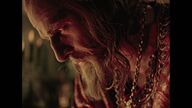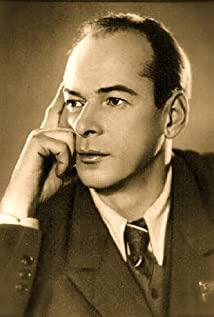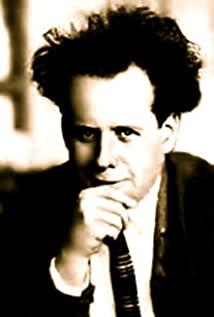Unlike Ivan the Terrible, which is divided into two parts by caesarphoenix in the film's film text
, except for the second part, which has about twenty minutes (56th to 1h13th, and the end) of color images, the rest are in black and white , has the unique cleanliness, delicateness and beauty of light and shadow unique to black and white films.
From the perspective of image ontology that reproduces reality, "Ivan the Terrible" is not like a movie, but closer to a drama, a kind of drama that uses the camera to make choices.
The close-ups of the characters' faces are astounding, and the expressions are all impeccable. Tsar Ivan's face is often much larger than the entire body of the person next to him when it is in a close-up view, and the shadow is often huge under the light.
But that kind of exaggerated concentration, such as representing the game of multiple forces through the expressions of several people in a scene, when the conspirators are talking about the conspiracy, the protagonist is present but can't hear them, etc., are all hypothetical fictions unique to theater art. That's what Mérieux did in the early days.
From this film, it can be seen that Eisenstein's understanding of the nature of the film is completely different from that of Bazin, which should be shaped by a series of factors such as his environment, growth experience, and aesthetic views. After all, such a film will not become the mainstream of the film, because after all, the film depends on its own unique quality to distinguish it from other arts (especially drama).
Ivan Vasilievich (Ivan IV), also known as Ivan the Terrible, was Grand Duke of Moscow from 1533 to 1547 and Tsar from 1547 to 1584.
As the first Moscow tsar, Ivan the Terrible wanted to complete the unification of Russia, resist foreign oppression and aggression, and purge Powell internally (Powell was an aristocratic class in Tsarist Russia).
From the film, Ivan the Terrible is undoubtedly taking a dictatorial road. In order to clear the Powells' restrictions on royal power, he made a series of struggles: for example, at the end of the first part, he decided to leave Moscow and was invited back by the people. Failed the Powells who colluded with the King of Poland; did not compromise under the threat of the clergy; killed his cousin by scheming.
When Ivan the Terrible was crowned, there were many enemies, the Pope didn't recognize it, Europe didn't recognize it, the Powells were unhappy, and his own aunt wanted to hurt him (I didn't see that until the tsar's aunt took off the black robe in the second part. is a woman).
When the return from the attack on Kazan was about to die, all the nobles did not support Ivan's children. After the miraculous recovery, the long road in the future can only rely on himself. In Ivan the Terrible's life, it seems that only his wife and his relationship are two-way. The two friends he values have betrayed him, The cavalry regiment and people who supported him were only regarded as slaves and loyal dogs by him.
The whole film has strong symbolism and mysticism, and the narrative tone has some kind of weird joy and innocent cruelty.
A cult of Peter I and Stalin, Ivan the Terrible had his own unique qualities (ambitious, contagious) and his own pains (loneliness, lack of trusted people and friends). It is worth mentioning that the characters in the film also have a certain unique beauty, like sculptures. So even if the film contains more political elements, its beauty is still indelible.
---------------------------------------------------------
Disc bought After more than half a year, I finally watched it today, and the random records are as above.
View more about Ivan the Terrible, Part II: The Boyars' Plot reviews










